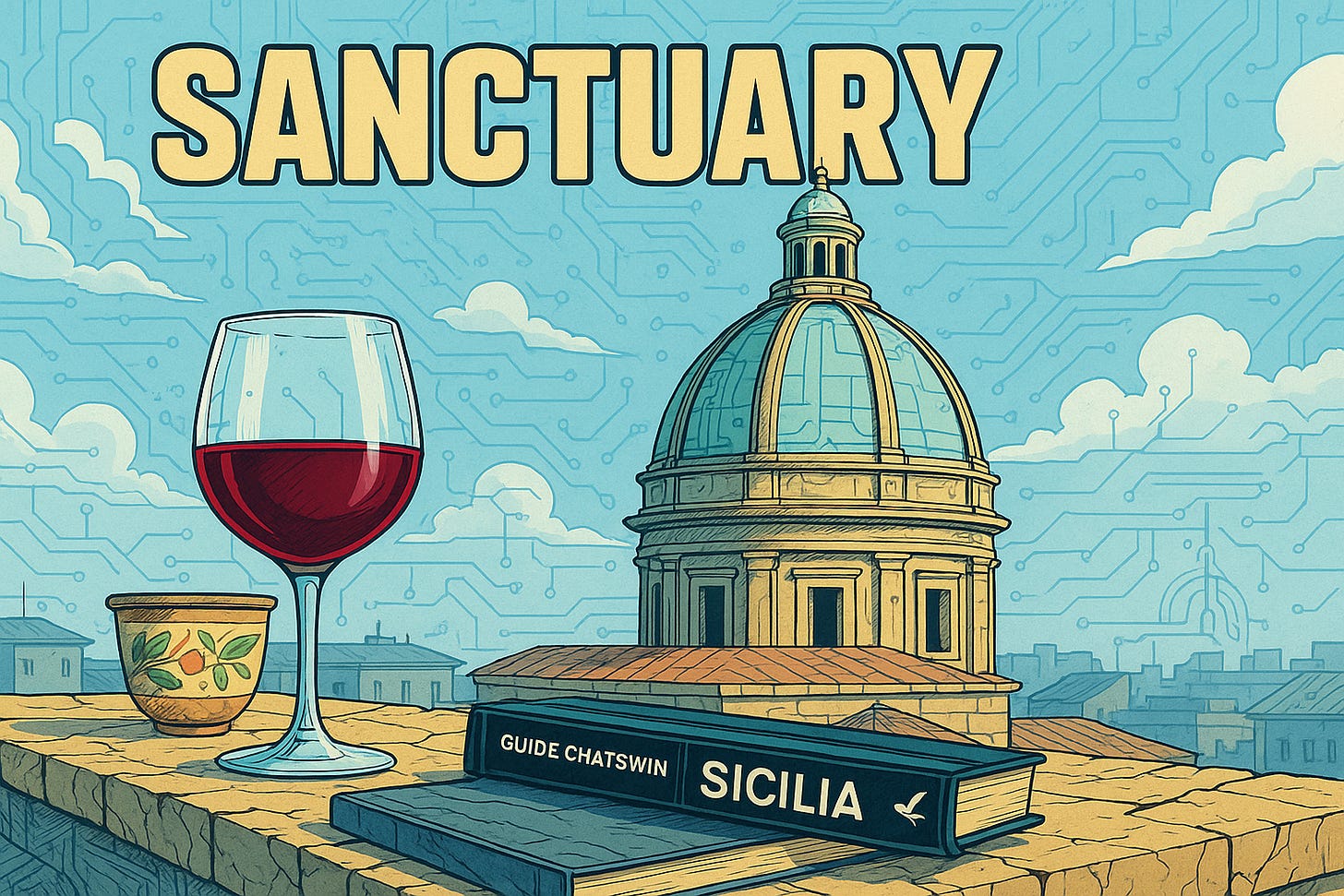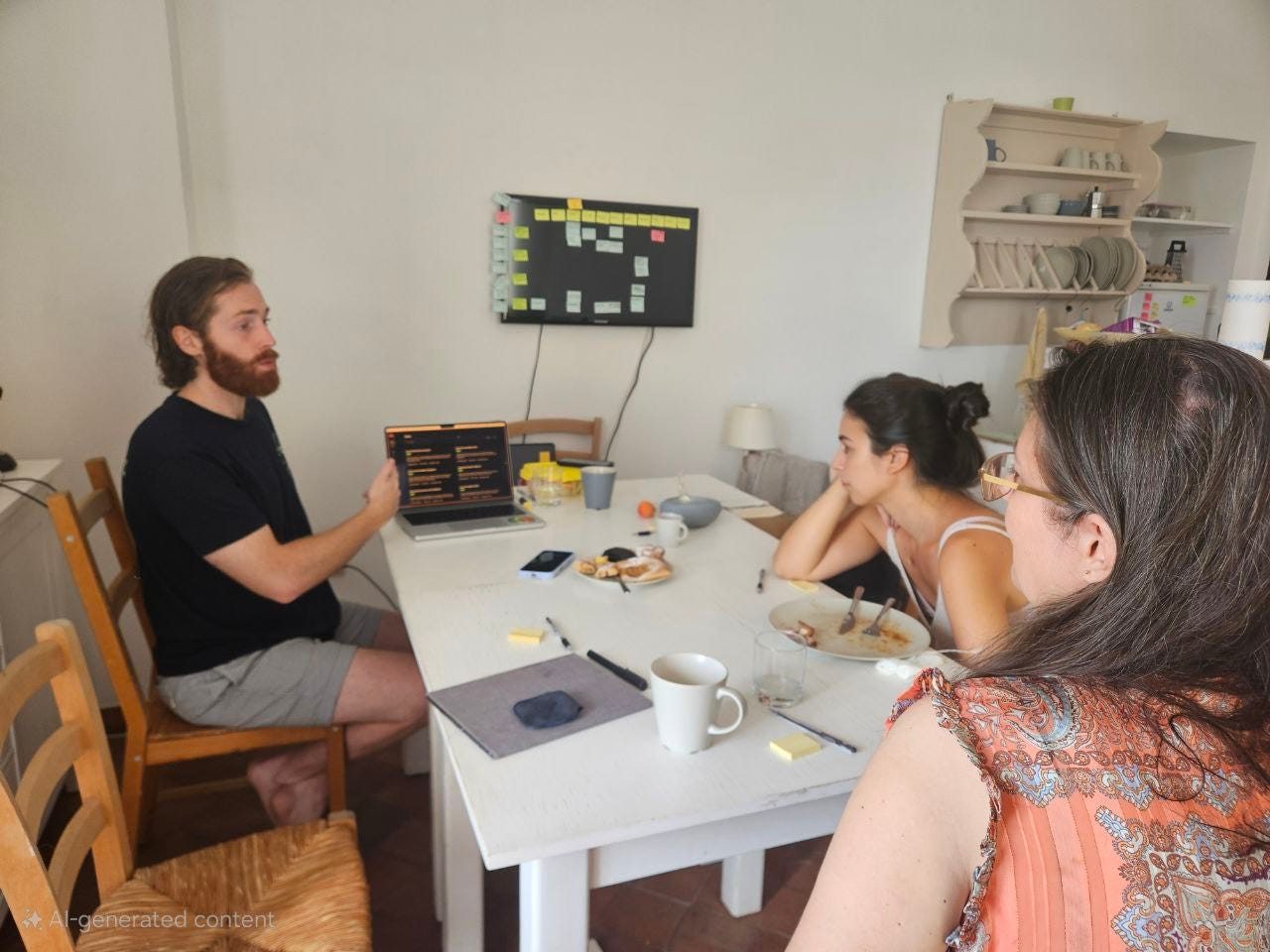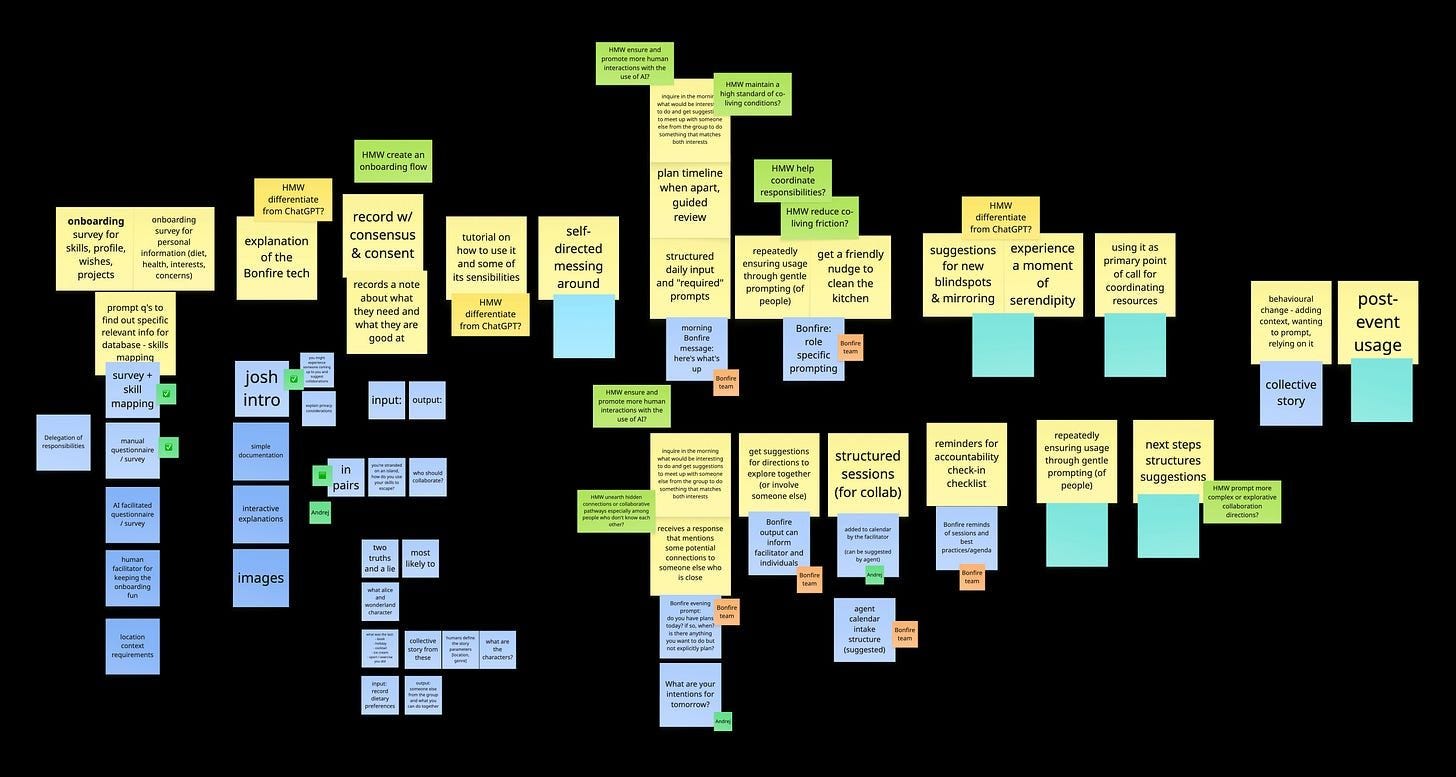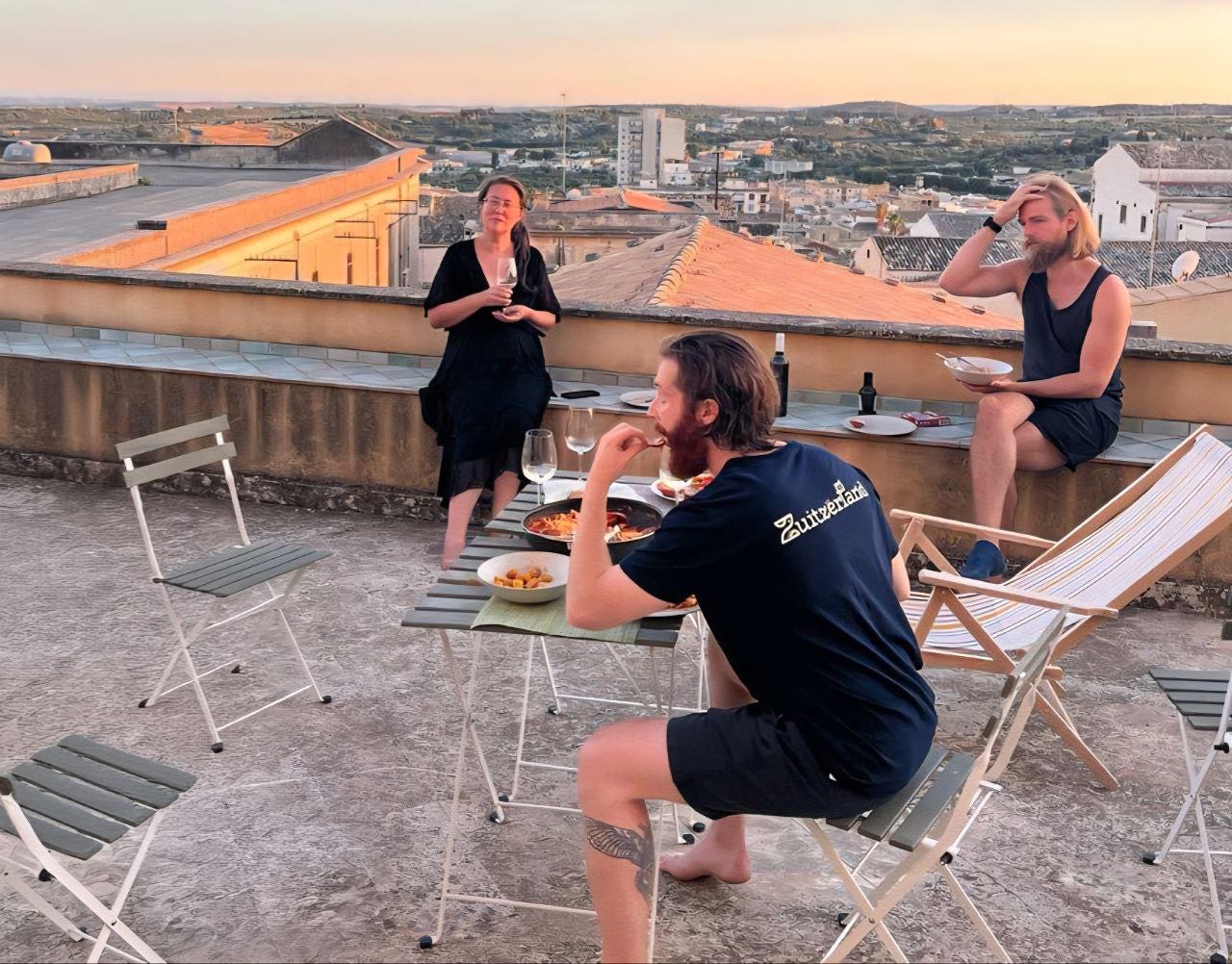As a follow-up to the Bonfire case study, this piece unpacks the co-living blueprint: the motivation for the experiment, the decisions behind house, team, and roles, and the lessons we’ll carry into what comes next.
Stress Testing Socio-Technical Innovation
Today’s economy and the hype around overfunded startups push society toward efficiency at any cost, hyper-individualisation, and seemingly safe conformity. Cities are becoming increasingly expensive and isolating, degrading our quality of life.
Technical teams create solutions that could theoretically support diversity, increase collaboration, promote harmonious living, and strengthen interpersonal trust. However, they often struggle to apply and bring their innovations to the aforementioned issues in the real world.
Socio-technical innovation happens when both worlds intersect - when the pressure to change passes a critical threshold and technological progress is sufficiently advanced to support new ways of being.
We believe that we are at the beginning of this kind of intersection point of human civilization.
Based on our past experience with co-living and technological innovation (hosting 30+ wellness retreats and 100+ design sprints), we created a 10-day "Sanctuary" in Noto, Sicily, with the intention for everyone to collaborate and grow, while having a decompressing time in an inspiring place.
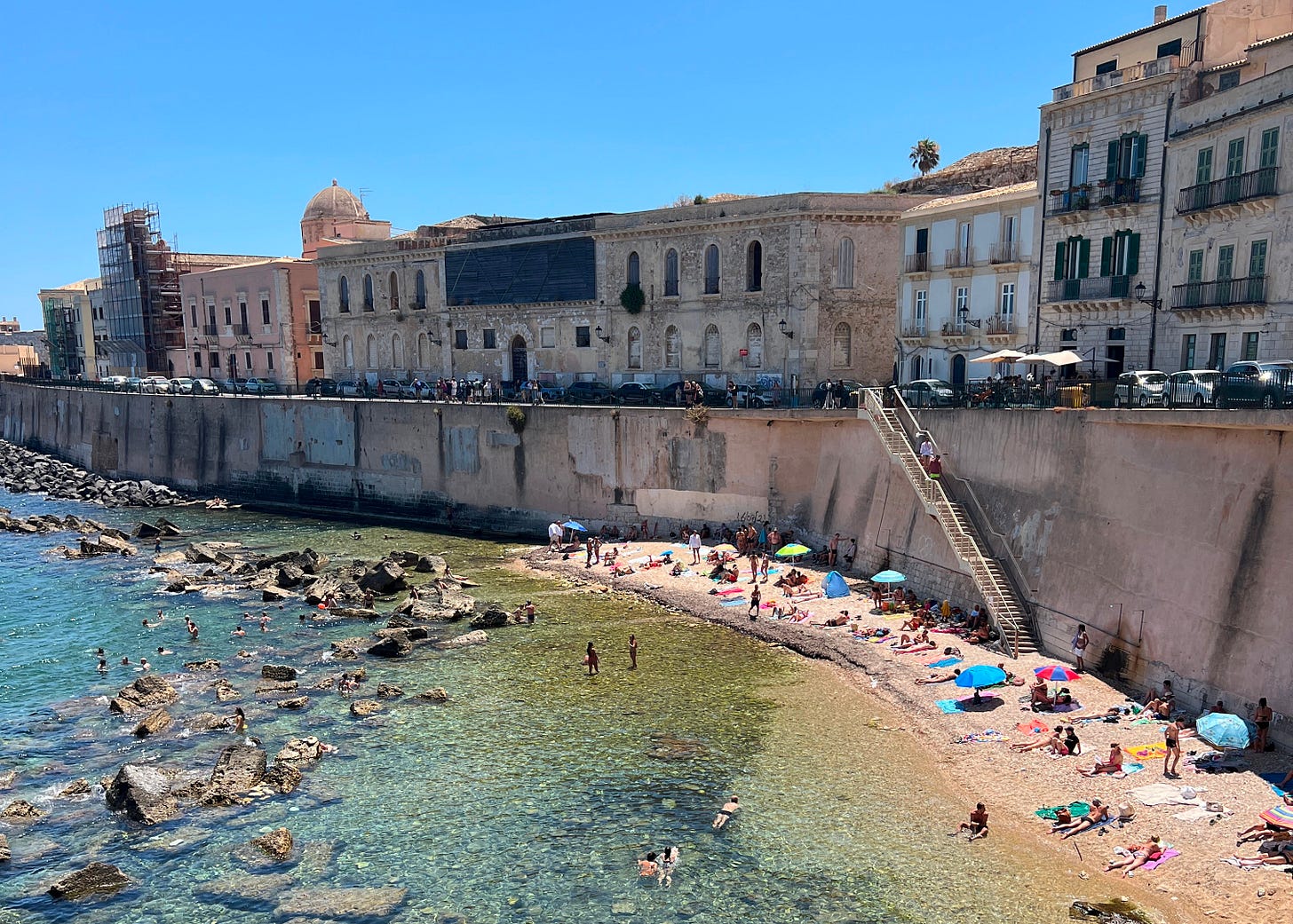
Our group consisted of five individuals with unconventional career paths, interest in novel co-living approaches, and extensive experience in industries related to software, finance, legal infrastructure, wellness, and web3.
Simulating the conditions for product-market fit
Throughout the Sanctuary, we designed and tested an application of the Bonfires.ai protocol - an LLM to facilitate peer-to-peer interactions and improve group coordination.
The design and research process loosely resembled a product design sprint, where the co-living environment simulated the conditions of the future market of the product. Within 10 days, we were able to create a prototype and gather insights that provided a clear strategic direction for future use cases of the protocol.
Here is a quick overview of the process:
Pre-arrival
Choosing the location to optimise for low cost of living, high-quality food, nature, and enough space for solitary time
Curating participants for the best fit and collaboration with the data from skill mapping
Structured co-creation sessions were key to ensuring harmony. We quickly agreed on intentions, set hypotheses, designed our desired experience, and decided on categories of interest:
Process & Documentation
Food
Coordination & collaboration
Remote access
Design, prototyping, and testing technology for positive behavioral change
Collective wellbeing & physical health
Local impact & circular economy
Maintenance of the space would have required deliberate task breakdown and delegation, but was outsourced to Airbnb in our case.
On-arrival
Opening ceremony and introduction, delegation of responsibilities, short “True Stories“ exercise to open up to each other
Co-living Bonfire product design
Bonfires.ai is an AI infrastructure that can host individual “Bonfire“ instances, depending on context and specific needs. During the Sanctuary, we designed a use case for a Bonfire instance focused on the co-living experience.
Team brief and presentation - project demo and survey of participants
Alignment on objectives and setting the focus - overall objectives, HMWs, user journey map with focus areas for research
Ongoing interviews and user testing
Summary report with insights about the co-living use case of Bonfires.ai
Wrap-up
Feedback and expressing appreciation towards everyone’s contribution
Retrospective and case study summary
You can also find the full breakdown of the process and working files here.
What We Learned in Sicily
To ensure that the Sanctuary didn’t feel like “another retreat“, we kept in mind our hypothesis of “the future of being” and made sure our Bonfire design adds to the experience. This combination helped us sharpen our observations and consider a few guiding questions:
1) Are we able to create a safe space that supports personal well-being goals? Would the residents be able to recover, grow, get inspired, and be themselves while building trust with each other?
Based on our survey, the group’s mental health improved on average, and everyone progressed in their own project while sparking ideas for future collaborations.
Subjective productivity declined over the course of the week, but was mostly consistent with individuals’ goals. Some wanted to be less productive or decompress (Cat and Ramona), others (Anon and Josh) wanted to get stuff done.
2) Are we accessible online?
At the size of our small group of 5, it was difficult to balance IRL experiences with online collaboration. A few people took part in online sessions, but more attention is required next time if we want to maintain this connection.
3) Can we achieve this at a lower cost compared to city life, with a higher quality of well-being for all?
Our reference point was a 1-bedroom apartment in Berlin, with €375 per week (or €1500/month ). In comparison, the average cost for participants was approximately €250-300 per week. The food options, access to nature, and social aspects of the Sanctuary offered a lower price point with a higher quality of wellbeing.
4) Are we able to design and research a viable use case for Bonfires.ai that enhances collaboration and coordination?
At this scale, the Bonfire was merely a supportive element to the co-living environment that helped the facilitator care for the group. However, in larger groups over extended periods of time, we believe it can help mitigate conflicts and significantly help with planning based on the participants’ interests.
Overall, everyone was excited to experiment with Bonfire and saw the value of improving coordination in the co-living environment.
The design and research process saved Josh, the founder, approximately 8 weeks of research with remote testing (a lower-quality process to define the value proposition) and $10k–$20k in research/program costs.
You can read the full summary and research report here.
5) Can we meaningfully connect with locals?
Our only interactions were with sellers from the market and restaurant owners (who supported crypto), as well as a few people on the street. Next time, we see an opportunity to decide ahead of time what we want to learn from locals, and to find opportunities for more intentional collaboration.
Opportunities for improvement
We consider this unique event to have been overall successful as a case study for project-focused, purpose-oriented, harmonious co-living. Based on this experience, we will establish clear rules and guidelines for the next Sanctuary to optimise for a more ideal research environment.
Local Environment and Economy:
Exploration of trails, the local economy, and civic projects before the Sanctuary to offer direct opportunities to explore the local environment.
Find a local place to donate leftover food or have a leftover dinner party.
Prepare a list of contacts and opportunities ahead of time.
Onboarding and Curation:
Skill mapping exercise for all participants to start with clear personal goals and focus, and to curate information for optimal knowledge exchange/workshop content during our time together.
Agree on these plans during the onboarding process.
Provide instructions on how to rent a car at the location.
Structure & Planning:
Earlier preparation, a clear suggested schedule, and defined coordination around logistics like meals and shopping.
A clearer definition of roles and responsibilities before the start.
Time blocks for personal morning and evening routines, exercise, and spaciousness.
Note down tangible outcomes or wishes for ideas discussed.
Physical Space Upgrades:
A bigger kitchen for simultaneous use
Multi-purpose common areas
Private rooms with windows and good ventilation.
Program Design:
More intentional day-to-day flow, potentially with themed or story-driven elements.
Better design for and planning of online contributors.
Do daily check-ins to understand where people are at in their lives and what they need.
Incorporate fun, low-budget "wish-fulfillment" activities and rewards.
Technical Enhancements:
Better internet, devices, and integrated tools for LLMs (e.g., voice transcription, image recognition) to make coordination more engaging.
Design and research process:
Establishing baseline data to compare with technological interventions.
Delegation of specific tasks for interviews and field observation.
Investment and Compensation:
Clarifying investment in the research project and compensation for explicit roles and responsibilities.
If you’re thinking about whether you should replicate this somehow, we would certainly recommend you to experiment. Here’s a full breakdown of the design process and how you can try it yourself.
The next Sanctuary - Sri Lanka
In the second half of October, we are planning the next Sanctuary. If you have a project you’d like us to experiment with, or are interested in joining or co-creating, you can leave your details here. We will invite you to co-create the next Sanctuary!





